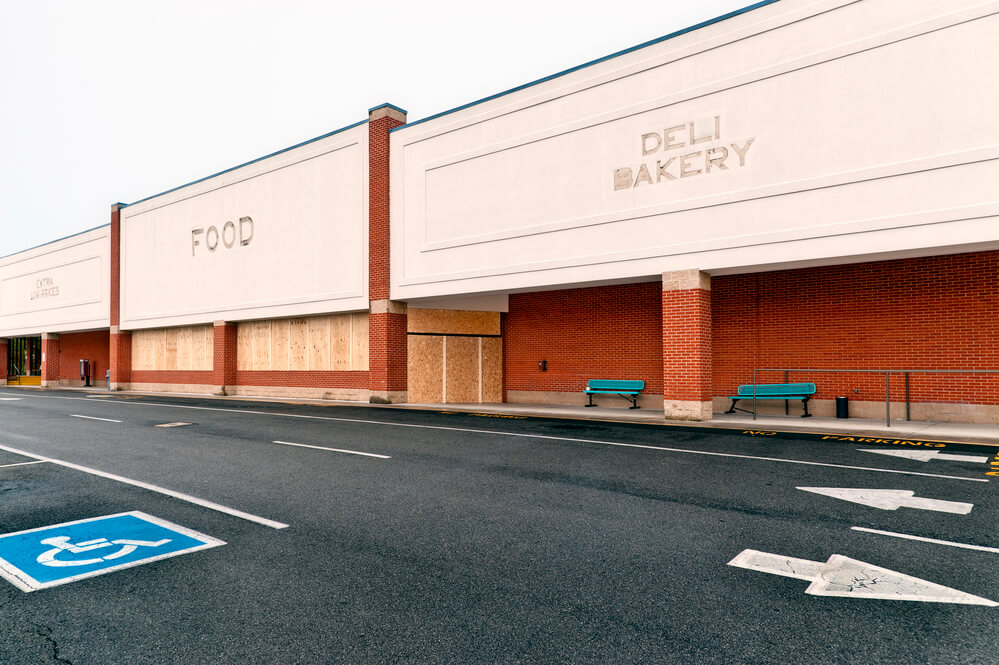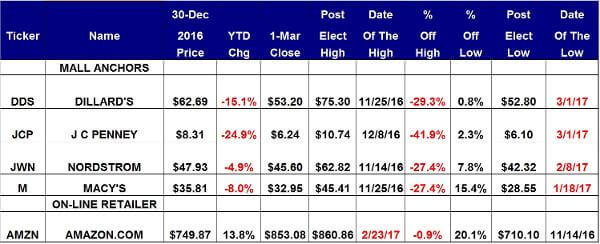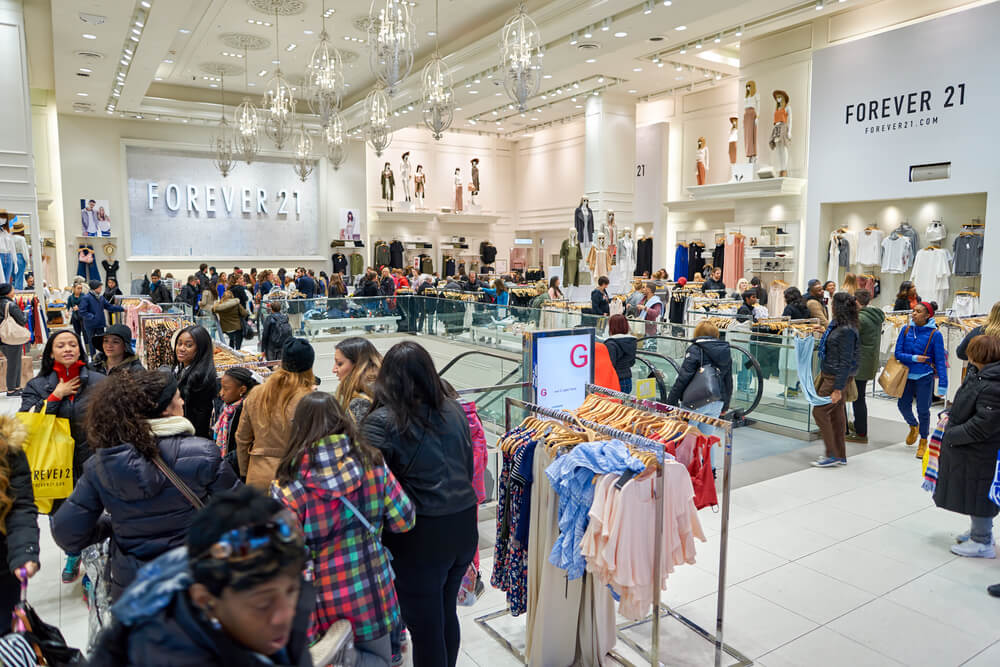Nightmare on the street of malls: how shopping centers in the USA die
Just a few experts in the US recently they are predicting a quick death shopping centers. In 70, the malls forced trade out of the streets, and now the malls themselves have fallen victim to online stores. In particular, the American online retailer is becoming one of the “killers” of offline retail Amazon, which continues to increase market share. Revision E—pepper, Igor Bakharev и Sonya Goma, figured out exactly how shopping malls in the US die.

Фото: Depositphotos
Death by one scheme
According to the analyst TheStreet Richard Sentvilus, with the advent of Amazon American consumption patterns have changed significantly. For traditional large chains, and at the same time for shopping centers, the last days have come. Large malls are “dying” according to the same pattern. Here's how it happens:
In July last year, the giant network store Sears left the main shopping center Beaver Valley Mall city of Monaca. Now the second “anchor” tenant, a retail chain, is leaving this mall Macy's. Both stores suffered greatly due to Amazon.
Manager Beaver Valley Mall Tim Mascari admits the departure of anchors is killing the mall. A “cascade effect” begins: stores leave the mall one after another. Thousands and thousands of stores in the United States are closing according to the same pattern. In particular, I encountered the same problem Shenango valley mall, one of the largest malls of Pennsylvania.
In Arizona alone, over the past couple of years, approximately 220 such “anchors” have left large malls in local cities, such as Sears, Kmart, Macy's. It is planned to cut retail outlets JCPenney.
Recently, a large retailer of electronics, home appliances and furniture Hhggregg announced the closure of 88 stores in 15 states. The company filed for bankruptcy. Macy's also considering the possibility of selling or reorganizing. The company has closed 68 stores.
"List of victims Amazon no longer limited to electronics stores. The sad fate befell the network Sports Authority and American Apparel“, recalls Richard Saintvilus.
Entire branches are gradually leaving offline. US network of stationery stores Officemax massively closed its stores all last year. The company said that they could not stand the competition from online stores such as Amazon.
According to the United States Census Bureau, since 2001, the revenue of large shopping centers has fallen by 36%. In a study AT Kearney It is noted that the youth audience (millennials) less often than other age groups visits shopping centers. Most actively it is done by adults. Analysts say that retailers and brands should attract the youngest customers to build long and lasting relationships with them.
“Teenagers no longer hang out in malls unless they are led there by Pokémon GO. The habits of adult buyers have also changed,” said the investment director BMO Private Bank Jack Ablin.
A comparison of the four classic “anchors” of American malls and data is instructive Amazon:

Online path
Many networks have decided to change their strategy: close part of offline stores and focus on online sales. So did, for example, in Sears, Kmart and JC Penney.
Retailers and market experts agree that the implementation of omnichannel strategy can help offline stores withstand the pressure from online sites. CEO JC Penney Marvin Ellison said that the company’s new goal is omnichannel: that an online order could be obtained on the same day in an offline store and at the same time be able to exchange or return goods. For such a strategy, offline storefronts are not at all mandatory, therefore Allison announced the reduction of sales points of his network.
“We believe the future belongs to those companies that can combine traditional retail with online trading, using offline stores in a way that minimizes growing logistics costs,” he said.
Recognized offline giants are also forced to go online. American retailer Walmart plans to cut about 1 000 jobs. According to The Wall Street Journal With reference to its own sources, the company intends to reduce costs and focus on the development of online commerce. Online Playground Jet.comthat belongs to an American retailer, bought the shoe online store of clothing, shoes and accessories Shoebuy.
Director General Macy's Terry J Lundgren says the company will increasingly move online. “We are pleased with the strong performance of our online business, as well as our cost reduction program in 2016. At the same time, there are fewer and fewer visitors to our offline stores.” The company expects that in 2017, online and offline sales will be comparable. “We will continue to improve our omnichannel strategy, focusing on online shopping and providing customers with the opportunity to receive them in offline stores,” the businessman adds. Besides, Macy's invested in analytics to understand customer behavior strategies.

Photo by Sean Posey / Flickr
Not so bad
However, the scale of the problem is still small, analysts admit. Although some malls in the US do experience difficulties, it’s too early to say that online retailers will supplant traditional retailers.
Despite the care of stores, large shopping centers are still very popular. At the end of the 2016 of the year, the Arizona malls belonging to Macerichturned out to be filled with tenants on average 92%, and Biltmore fashion park figure was even higher - 98,4%. Rent, traffic and other indicators are also high.
The first thing big stores should hope for is population growth. According to research company Conference Board, Arizona's population, for example, will grow by 21,1% between 2015 and 2025 a year, while the national average will increase by 8%. Since sales growth is closely related to demographic changes, experts believe that this will play into the hands of shopping centers.

Фото: Depositphotos
It's not just population growth that's encouraging. Many shoppers still like to go shopping to see things in person, consult with store employees, and hunt for discounts. A significant factor is the ability to return the product.
Analytics consulting firm AT Kearney note that returns are an important reason why people still go to brick-and-mortar malls. In addition, returns help retailers generate new sales. The survey, in which more than 2 thousand people took part, showed that most buyers are comfortable choosing and studying products on the Internet, and for everything else - trying on, testing, payment, delivery and return - they often choose “traditional” stores.
Read also on ForumDaily:
5 secrets of profitable shopping on Amazon
How to save in the popular chain stores Target
Walmart's 16 secrets to help you save
Apocalypse is coming: retailers will close more 6 100 stores in 2019 year
Subscribe to ForumDaily on Google NewsDo you want more important and interesting news about life in the USA and immigration to America? — support us donate! Also subscribe to our page Facebook. Select the “Priority in display” option and read us first. Also, don't forget to subscribe to our РєР ° РЅР ° Р »РІ Telegram and Instagram- there is a lot of interesting things there. And join thousands of readers ForumDaily New York — there you will find a lot of interesting and positive information about life in the metropolis.











